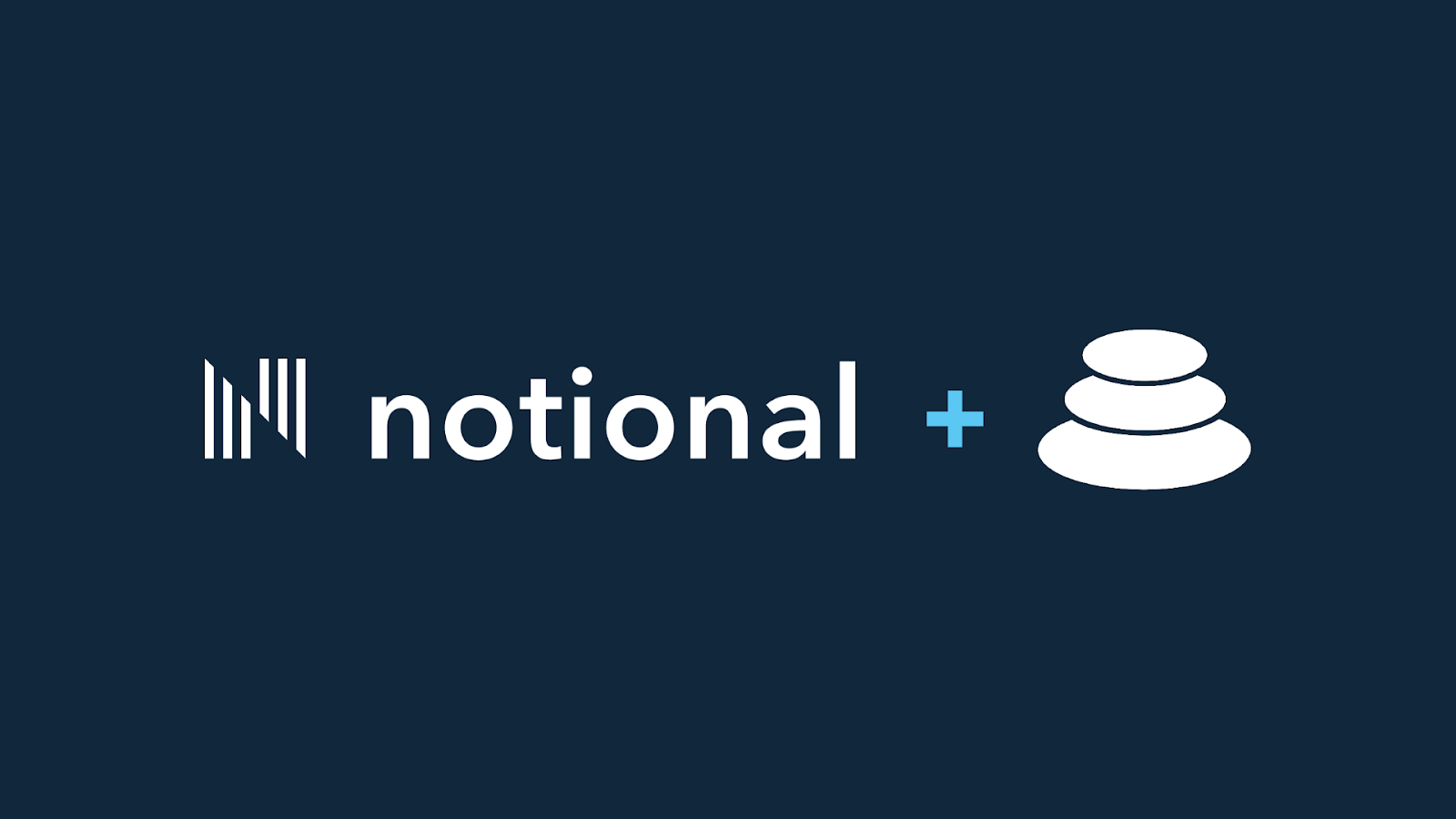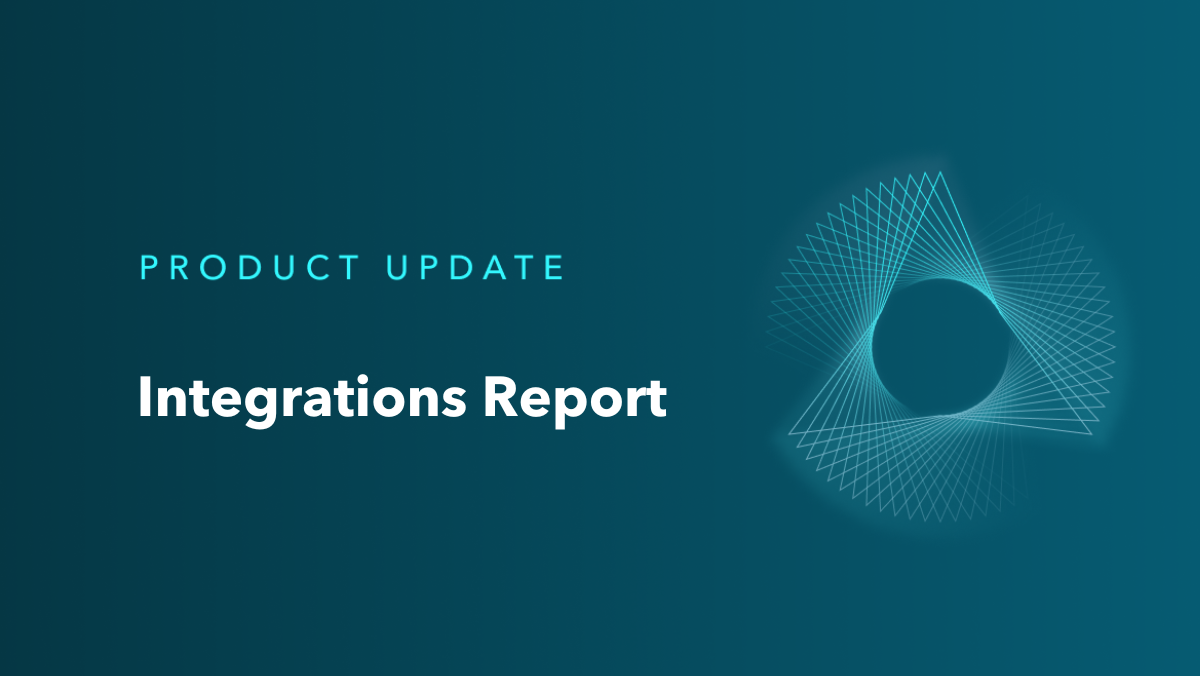
Notional's Performance During Extreme Volatility
In this post we’ll examine what risks Defi Lending Protocols Face, how Notional manages them, and how Notional’s risk mitigation measures performed in the recent market volatility.
Over the last few months, we witnessed large centralized crypto lenders halting withdrawals and even defaulting on some of their obligations due to wholly inadequate risk management. The recent events highlighted how DeFi protocols like Notional differ from their CeFi counterparts due to attributes like:
- Overcollateralization
- Transparency
- Organic yield generated on-chain
- Predictable and smart contract-enforced liquidations
These qualities have made DeFi lending protocols much safer than CeFi lending desks. But although major DeFi protocols have so far proven to be highly robust, they are still subject to real economic and technological challenges such as price risks, oracle risks and liquidity risks.
TL;DR
- Notional proved to be extremely resilient and was highly effective at protecting users in times of high volatility.
- Liquidations worked exactly as intended with multiple parties competing to liquidate risky accounts in a timely manner.
- $1.4M worth of collateral assets were liquidated in the months of May and June.
- The protocol successfully processed large redemption transactions on demand without ever being unable to meet redemptions.
Let’s start by looking at the risks that DeFi lending protocols need to manage one by one.
Price risks
In order to ensure that borrowers have an economic incentive to repay their loans, lending protocols require borrowers to deposit collateral assets of a greater value than their debts on the platform.
As an example, Alice would need to deposit $1,000 of ETH in order to borrow $500 of USDC.
Overcollateralization is key to ensure that lenders' assets are well protected. If a borrower’s collateral assets are ever worth less than its debts then the system would incur what we refer to as “bad debts” meaning that lenders would not be able to recover the whole amount they are due.
Price risk is the risk that the value of a borrower’s collateral drops to less than the value of their debt. In general, the greater the volatility of an asset, the higher its price risk. Lending protocols mitigate this risk by liquidating accounts when they are deemed too risky.

Oracle risks
Lending protocols rely on price oracles in order to assess the value of collateral assets and debts. If these oracles are easily manipulatable or are not in line with the market prices at any time, then the oracles themselves can introduce additional risk to the system.
Oracle risk shows up in two ways. First, oracles can potentially be manipulated and trick a lending protocol into thinking that a borrower’s collateral is worth a lot when it is actually worth a little. In this attack, the lending protocol will allow the borrower to take out a much larger loan than it should against their collateral which artificially appears to be highly valuable. This is one of the most common attack vectors in DeFi.
The other risk that oracles present is that they can potentially be slow to update their prices or even report totally inaccurate prices. If an oracle is slow to update during a market crash, lending protocols will be unable to liquidate risky accounts until the oracles do update. And if oracles stop updating altogether, then lending protocols could become paralyzed and be unable to liquidate risky accounts completely.
It is for these reasons that Notional only allows high quality collateral assets and uses Chainlink, the DeFi gold standard, for its price oracles in order to reduce the risk of price manipulation and ensure timely updates.
Liquidity risks
DeFi lending protocols are also subject to liquidity risks in two fundamental ways.
- The first is collateral asset liquidity. When liquidating collateral assets, lending protocols rely on liquidators showing up and buying these assets at a discount to their current price. If the slippage for liquidators to convert the collateral asset into the debt currency is too high, then it will be unprofitable for them to liquidate the account and the protocol may become insolvent.
- Lending protocols are also subject to lending liquidity risks. Lending protocols must ensure that the assets that are being lent on the protocol itself can be redeemed if necessary. Lending protocols usually mitigate this risk by increasing the lending and borrowing interest rates when liquidity is low in order to incentivize users to supply additional liquidity and incentivize borrowers to repay their debts.
In order to mitigate these risks Notional uses liquidation discounts, exchange rate haircuts and buffers, and maximum collateral balances. Maximum collateral balances enable the protocol to limit its exposure to a specific asset in order to ensure that the asset’s liquidity is always sufficient to accommodate large liquidations.
Notional’s backstop
Although Notional has put all of these systems in place to mitigate risks it still begs the question “What happens if the liquidation system fails?”
If any liquidation losses materialized, the protocol could tap its backstop to ensure that users are made whole. Notional would first pull from its treasury reserves and could then sell 50% of staked NOTE tokens. Today this gives the protocol $1.9M in liquidation shortfall protection as the protocol owns $650K in reserves and $2.5M in staked NOTE.
Historical Performance of Notional
Let’s now look at how Notional handled the extreme volatility of crypto markets over the past few months.
As a reference, BTC and ETH respectively lost 48% and 63% of their value over the months of May and June 2022. Over that same time period, UST lost its peg and erased close to $60B of market value in the Terra ecosystem in the process. Large funds like 3AC went belly-up, and large, centralized crypto lenders suffered major liquidity problems.
Notional on the other hand remained fully solvent, and Notional’s users were able to redeem their assets at any time without issue. Let’s dive into how the protocol handled redemptions and the liquidation of risky accounts in these crucial times.
Redemptions
nTokens remained fully redeemable at all times even as their TVL decreased by -78% in less than 2 months due to massive redemptions.
As the markets tumbled, some LPs (nToken holders) withdrew their liquidity (redeemed their nTokens) from Notional in order to recollateralize their positions on other protocols or actively deploy their liquidity to other opportunities.
As an example, on the day of UST’s implosion, multiple LPs redeemed their liquidity from Notional with 2 LPs redeeming $105M in 3 transactions which represented a 56% decrease in nToken TVL in less than 24 hours:
- $66M nUSDC redemption from 0x9790e2f55c718a3c3d701542072d7c1d3d2e3f5f
- $20M nDAI redemption from 0x4a65e76be1b4e8dd6ef618277fa55200e3f8f20a
- $20M nDAI redemption from 0x4a65e76be1b4e8dd6ef618277fa55200e3f8f20a.
We also witnessed multiple nWBTC redemptions for a total of 75% of the outstanding nWBTC supply in late May. These redemptions pushed the WBTC yield curve to its lower bound of 0.3%. Some users subsequently benefited from these low rates to borrow WBTC. But again, users were always able to access their funds despite sky-high redemption rates.
Liquidations
As crypto prices decreased over the months of May and June, 8 accounts became undercollateralized. As a consequence, $1.4M in collateral assets were liquidated across 20 liquidation transactions. All undercollateralized accounts were liquidated in a timely manner and the protocol experienced no insolvencies. The following graph displays the amounts of collateral assets that were liquidated over time. We can see that liquidations clustered around May 12th when UST depegged and in mid-June when crypto prices declined abruptly.
These liquidations were conducted by 5 liquidators who generated a total of $66K in profits. The following graph displays how much each liquidator generated in profits:
Breaking down liquidation profitability
To take this a step further, we can use historical analysis to determine whether liquidations would have been profitable at different times during the price crash and see how Notional would have performed if it had more risky debt on the protocol. In short, Notional would have been reliably able to liquidate large, risky borrowers at all times throughout the market volatility.
To perform this analysis, we need to first dig in to exactly how liquidations work. The typical ETH/USDC liquidation uses flash loans and is structured like this:
- Flash borrow USDC
- Purchase the risky account’s ETH in exchange for USDC at a discount to the current oracle price
- Swap the purchased ETH for USDC on a DEX like Uniswap
- Repay the flash loan and pocket the USDC difference
This liquidation structure implies that the following variables impact the PnL of liquidators:
Liquidator PnL = Liquidation discount - Price basis - Slippage - Fees - Gas costs
The price basis corresponds to the price difference between Notional’s Chainlink oracle price and DEX market prices.
Liquidation profitability
It is critical that the liquidation discount offered to liquidators is sufficient to cover for liquidation-related costs during stressed market conditions. If liquidations are profitable, we can be confident that they will happen. To determine if liquidations would have happened, beyond the liquidations that did happen, we can simulate the profitability of liquidating $10K and $1M in ETH collateral on May 12th during UST’s depeg event.
In order to simulate a liquidator’s expected profitability over time, we started with the 6% liquidation discount the protocol gives to liquidators. We then factored in the historical price basis between Notional’s oracle prices and market prices into the liquidation PnL. We then computed the relative gas cost of liquidating an account on a block per block basis using historical data. Finally, we included the trading costs (ex: swap fees, slippage) of liquidating an account to our calculation.
This analysis demonstrates that Notional’s liquidations would have been reliably profitable even through extreme market turbulence. As we can see, the net profitability of liquidating $1M in ETH usually hovers around 5%, resulting in a profit of $50K.We can also see that the liquidation profitability has been overwhelmingly positive for $1M liquidations across this 24 hour period, with very brief moments of slightly negative profitability. The longest time period where the profitability of liquidating $1M of ETH was negative spanned less than 8 minutes and was mainly due to a large price basis between the market price and the Chainlink oracle price.
Unsurprisingly, the profitability of liquidating $10K of ETH is more variable, as the relative gas cost of liquidating such a small position during times of peak usage spikes can be momentarily high. This has not been a problem for Notional as very few borrowers had small accounts.
Conclusion
Over the past few months, Notional got its first big stress test and proved it was able to continue to operate seamlessly even in times of high volatility. The recent market downturn highlighted the extreme opacity of CeFi lending desks operations, contrasting with the transparency of DeFi lending protocols like Notional, which operate fully on-chain.
Risk management and security are our top priorities at Notional and will continue to be so as we build a more transparent and accessible financial system.
Resources
https://info.notional.finance/
https://blog.notional.finance/notional-historical-data-exporter/
https://docs.notional.finance/governance
https://blog.notional.finance/understanding-liquidations/
https://blog.notional.finance/improved-risk-metrics-for-borrowers/
About Notional Finance📈
Notional is the first decentralized, Ethereum-based protocol for borrowing and lending at fixed rates and fixed terms. With variable rate lending, DeFi can only serve a small segment of the crypto lending market because variable interest rates don’t provide the certainty that lenders and borrowers require. Notional fixes this by creating a true market for lenders and borrowers that empowers individual investors, business owners and institutional investors.
After raising a $10 million Series A in May 2021 from some of the top VC firms, including Coinbase Ventures, Notional’s protocol was relaunched on 11/1 with a host of new features as well as the NOTE governance token. Notional is now a top 10 DeFi lending protocol with more than $500M in total lending volume.
To find out more, follow Notional on Twitter @NotionalFinance, subscribe to the newsletter, join the Discord, or check out the website to learn more.

Notional Finance Newsletter
Join the newsletter to receive the latest updates in your inbox.









